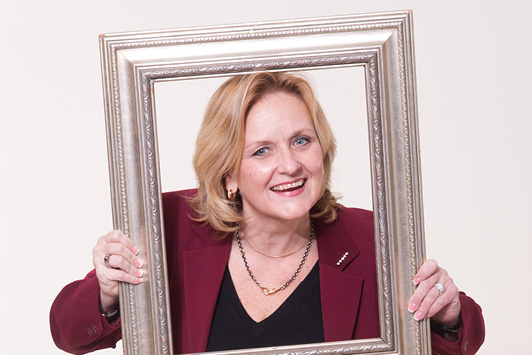
Forget about bringing donuts to a store meeting and hoping the salespeople remember your brand.
“Every time a new product — those shiny pennies — lands in the store, your brand steps back one more notch in terms of focus and attention,” explains Kate Peterson (pictured), president and CEO of retail consultancy Performance Concepts in Montgomery Village, Maryland.
And that’s not the only competition. “Customers are being blasted with messages from online retailers,” notes Jevan Fox, vice president at Devotion, a diamond manufacturer based in Montreal, Canada. “Before a customer even comes into the store, she has not only interacted with multiple jewelry store brands, but also engagement ring brands. How do you convey what makes your offering different from those in the next case? You really need a robust, sophisticated and long-term program that incorporates training and development resources.”
In other words, managers recognize the need for a brand advocacy program.
Show, don’t tell
Advocacy begins before the brand is in even in the store. “Our new accounts get a packet of marketing and selling materials which tells our history, our brand story, our services, and the main points of product differentiation. Then we follow up with in-store training in select accounts,” says Melanie Goldfiner, director of business development at Los Angeles-based diamond manufacturer Rahaminov Diamonds.
“Show it — don’t tell it!” is the mantra of Devotion’s training and development program, which Fox describes as taking sales training to a higher level.
“It’s all about understanding how [a Devotion] diamond performs in terms of what the customer sees,” he explains. To accomplish this, the Devotion staff brings in diagrams that detail the faceting structure; rough diamonds to show the trainees that part of the process; and digital marketing materials to acquaint them with the messages customers see.
Taking it to the retailer
Diamond manufacturer Stuller in Lafayette, Louisiana, takes a multifaceted approach to training, much of which focuses on the store owner.
“Our goal is to make it easy for any person in the jewelry industry to grow their business,” says Kevin Metz, the jeweler’s chief marketing officer. Its business development team visits key accounts to determine how Stuller can help them address the challenges they face. Stuller also has brand ambassadors who work to build stronger relationships with these stores, while also serving as liaisons to Stuller’s other programs.
Through Stuller’s bridge program, which runs five times a year, about 50 accounts spend two-and-a-half days at company headquarters “immersed in who we are,” according to Metz. “This also gives store owners an opportunity to interface with other independent business owners. To avoid any direct competition and create an environment conducive to sharing ideas, attendees come from different markets.”
Stuller also conducts workshops for the back of the house — the tool guys and the bench jewelers — and takes diamond and gemstone experts on tours of major markets four times a year.
Social mission
“It is all about clicks to bricks,” says Fox, explaining that Devotion directly geo-targets customers using different platforms to attract specific demographics — Facebook skewing older and Instagram slightly younger.
At Stuller, relates Metz, “we proactively create our social media assets and posts with the purpose of making sure the individual owners can reuse and/or adapt them.”
The bottom line
“The truth of the matter is that if you want your retailers to be successful, you have to invest in them, and training is an integral part of that,” says Rahaminov’s Goldfiner. “You cannot expect someone to successfully sell your jewelry if they don’t understand your brand.”
Stuller takes an analytical approach and closely monitors its programs, which all produce a positive return on investment (ROI), according to Metz — though complete results may not be evident until after a year or two later.
“We often tell salespeople that if a customer is standing in front of you talking about what they’ve seen online, they are yours to lose,” says Peterson. “The fact is that they did not buy online, and for some reason, that drove them into your store. More often than not, what they are looking for is a combination of personalized information and genuine passion.”
Image: Stuller.Article from the Rapaport Magazine - April 2018. To subscribe click here.